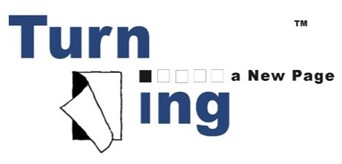Awarded Contracts
- PCA OD-320-20 - Educational & Instructional Materials, Supplies and Related Items
Contacts:
Darryl Mrockowski
PH: (520) 579-7183
Email: darryl@turninganewpage.com
Members put "PCA OD-320-20 – Educational & Instructional Materials, Supplies and Related Items" on your Purchase Order
Turning a New Page focuses on literacy programs that help older struggling students. This work has been featured on an ABC special, “Reading: Your ABCs to Success”, the Journal of Adolescent and Adult Literacy and numerous newspaper articles.
Cracking the Code is a reading intervention for students in grades 3-12. It was developed while working with young adults who were trying to get a GED. They were reading at a sixth grade level or below. The students had the oral vocabulary of a young adult. They understood and used “grade level” language. However, the same words they used in their oral language, they did not recognize when they encountered them in print.
Test scores on these students showed low vocabulary and poor comprehension. The students were asked to read passages on the tenth grade level. We recorded the words they missed, skipped, struggled to pronounce or guessed. One week later, the students were told the words and asked if they knew what they meant. They correctly defined over 90% of the words they could not read.
Why do students have trouble recognizing words they know when they encounter them in print? We used that question to define our work. Research stated a common trait older readers have in common is weak decoding skills. Our students knew the letter sounds and could blend words that followed the basic decoding system – one letter, one sound. (b e s t) We found the weakness was indeed in decoding but not basic decoding. They did not understand or use advanced decoding. They did not see the 2, 3, or 4 letter combinations that went together to make one sound. (thorough) They were looking at individual letters and trying to figure out the word. That is why most older struggling readers say that phonics does not work.
Good readers see the combinations quickly and accurately. This allows them to commit words to sight quickly. Our students were taking so long to try to figure out words that they were not able to commit them to sight and would consistently try to decode the same word over and over. This interfered with their fluency and in turn comprehension. Improving the students’ vocabulary or teaching comprehension skills would not remediate the skill that our students were missing.
Cracking the Code teaches students to look at words in a different way. They no longer look at the individual letters but rather quickly and accurately identify the letter patterns in our language. The system is explicit and has no exceptions. Students learn the patterns in 12-15 weeks and quickly close the gap between their oral and reading vocabulary.
Once the “hole” in their reading ability was closed, they were able to go on to learn how to use context clues to figure out unknown vocabulary. The comprehension scores went up because they were now able to decode most of the words in our language. Their spelling improved significantly which showed they understood the 2,3 and 4 letter combinations.
Cracking the Code is a system that does not change. It begins at a level that allows the learner to quickly experience success and to be confident when they encounter the more advanced levels. The comment heard from many of our students and now on the cover of their workbook explains why Cracking the Code works. “I get it!”
Writing Steps to Success is for students grade 3-13 who do not pass writing assessments. They are unable to write complete sentences and stay on topic. They consistently make the same types of basic errors.
Writing Steps to Success is a quick and systematic intervention that teaches students to write using the following system:
Start with oral language – talk about the topic they will write about
Identify content words – create a list of words from their oral language
Create a variety of phrases – using their content words
Create different types of sentences – using the phrases they created
Create supporting sentences – supporting the sentences they created
Create a concluding sentence – for their prior sentences
Connect the paragraphs – making a completed piece of writing
Students move one step at a time focusing on the skills required for each step and building on those skills as they move to the next step.

